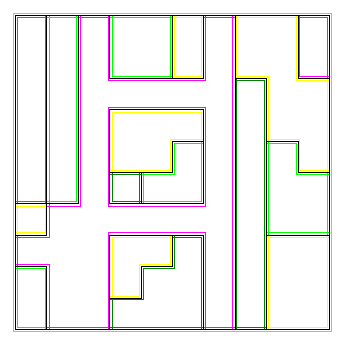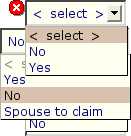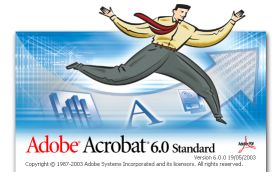HSBC seem to have improved since April 22. Their online banking now works with a better selection of browsers.
Category: computers suck
-
total sympathy failure
Oh, boo hoo — the CBC is moaning about petrol hitting 90¢/litre. It’s 81.9p/litre in the UK; that’s $2.002. So until we see a toonie a litre at the pumps in the GTA, cut the whining, please — I have MP3s that need listening to.
-
How to make Windows suck 10000 fewer times
In the same spirit of Marvin’s comment about Arthur Dent’s brain (
It amazes me how you manage to live in anything that small.
), it amazes me that anyone can actually get work done on a Windows box without having virtual workspaces …But I found DESKWIN, which does all I need; four virtual desktops, with hotkeys between them. Not much else. Perfect. Well, okay, Windows has still got about seven orders of magnitude of improvement to go before it’s even mildly usable, but it’s a start.
-
too many cables
The iRiver remote unit decided to self destruct last night, so it was a rather hurried trip off to G-WIZ to get it replaced. I’m also having a bit of a problem with cable management — my Sennheiser headphones have a 3.5m cable, and there’s probably another good metre or so of cable on the iRiver remote. So I’m wandering around looking as if I’m lugging a protable recording studio, even though the player itself is quite svelte.
-
raw, raw!
I’ve just ‘hacked’ my Nikon Coolpix 2500 to run in raw mode, using cpixraw (on a Windows machine, alas). I can read the files with Dave Coffin’s dcraw. So far, it seems I’m getting a bit more extra detail than from the original JPEG files.
The only real disadvantage I can see is that for every picture I take, a regular JPEG and a raw file is created. The raw file is confusingly called *.jpg. I think I can live with this.
-
iRiver, youRiver, hesheitRivers
I just bought an iRiver H120 portable hard disk/audio player/recorder. It seems to work quite well with Linux, so far. Even at over 9MB/s, it’s taking a while to transfer my music collection.
I bought it from the terribly-named G-Wiz store in Scarborough Town Centre. I think it might’ve been a store return — there was some truly execrable music on it (Eminem and Kylie Minogue … bleah!), and the packaging was slightly open. Hmm.
-
illicit substance: Caffeinated Scots Tablet
I make Scots Tablet; in fact, I’m almost famous for it. I also roast my own coffee, which I get from Merchants of Green Coffee. What harm could come from combining the two, I thought?
Plenty, is the answer. By adding ¼ cup (measured before grinding) of finely-ground coffee beans to a half batch of tablet has resulted in almost black tarry lumps that combined sugar, butterfat and caffeine into a mallet-to-the-back-of-the-head rush.
Next time, I might use just a smidge less coffee. At the moment, it’s like a cross between full-on Rademaker’s Haagsche Hopjes and Uncle Ump’s Umpty Candy. I suspect that the RCMP will come knocking soon.
-
Fortran is fast!
A routine that I prototyped in Perl took 7 hours 45 minutes to run on this P4-2800. The Fortran version completed in 192 seconds.
-
Fortran has no STDERR
I suspect it’s comp.lang.fortran‘s second most frequently-asked question, but the language has no concept of stderr, the POSIX error output stream. Or at least, there’s no standard IO unit attached to stderr, if it’s defined at all.
Since writing to stderr is my usual debug message method, this is going to be a slog …
-
Was there something in the water?

Just found one of my old Fortran-77 fractal programs, output of which is shown above. Reminds me of the days I used to consume (and ocasionally write for) Fractal Report avidly. -
so it might not look much to you …

Being able to see this represents quite a bit of work on my part. It’s the output from WAsP‘s map editor, reprsenting some terrain roughness data exported from Surfer.The original data set looks a bit like this:

It’s a grid of values. Unfortunately, WAsP wants the boundaries, and it took me a while to work out a (rather inefficient) algorithm to find them.
Now I have to go off and recode this in Fortran 90. I’m glad that the Intel® Fortran Compiler for Linux is available free.
-
HSBC must really hate Linux
HSBC Canada Bank discriminates against Linux users. On April 18th, they “upgraded” their online banking facilities. Before this, they were slightly clunky, but worked just fine on almost any browser and computer I’d care to try.
Since Sunday, though, this is what I get when I try to access my bank details using Mozilla 1.6 on any of my Linux boxes:
To access internet banking, please use:
* Internet Explorer version 5.0 or above; or
o Netscape Communicator version 4.72 or above (version 6.x currently not supported)So I mail them about this, and get this reply:
We apologize for the inconvenience; however effective April 18, 2004, when we launched our Personal Internet Banking update, the browsers that our Internet Banking will support are as follows: Internet Explorer 5.5 and up, Netscape 6.2.1 or 7.1.
I dutifully install Netscape 7.1 on my notebook, and what do I get?
To access internet banking, please use:
* Internet Explorer version 5.0 or above; or
o Netscape Communicator version 4.72 or above (version 6.x currently not supported)And this is with the real bloated-as-life Netscape 7.1
[Mozilla/5.0 (X11; U; Linux i686; en-US; rv:1.4) Gecko/20030624 Netscape/7.1 ] browser.Things got really weird when I tried Mozilla 1.6
[Mozilla/5.0 (Windows; U; Windows NT 5.0; en-US; rv:1.6) Gecko/20040113] under Windows 2000 — and it worked just fine.My usual browser identifies itself as [Mozilla/5.0 (X11; U; Linux i686; en-US; rv:1.6) Gecko/20040406]. Looking at HSBC’s browser-sniffing code (eww!) I find that it’s looking for Windows or Mac more than it cares about the actual browser.
I’d best go tell Evan, who maintains the very useful Banks ‘n’ Browsers page, that HSBC must really hate Linux. They really don’t need to give me yet another reason to switch banks.
-
An apt captcha

How apt that, in order to join have_moicy (the Holy Modal Rounders discussion list), I got the above captcha.Oh, and did I say that we really enjoyed hearing Chris Smither play at Hugh’s Room last Friday?
-
wireless dilemma
Okay, so I’ve got two wireless cardbus cards — an SMC 2435W and a D-Link DWL-650+. Both use the same chipset. Which to keep?
Yes, this evening saw Stewart wandering about his street in Scarborough seeing where each card gave out. I got some strange looks.
I think the D-Link card has the edge in range, being able to connect from across the street. It was a bit more expensive, and it has a bulkier aerial. The SMC is more svelte, and was less than half the price. I’d probably recommend both cards, if you can handle the hassle of building the acx100 driver.
I should really test their battery drain. I have a felling that the D-Link’s a bit of a hog, as my battery is dropping quite fast.
-
okay, so maybe it wasn’t so bad
So ufile.ca did actually work for us, but only under Mozilla on Catherine’s eMac. The process was actually quite painless, and their user interface is nice — if if works with your browser.
It’s strange that they claim that their system works with Linux, yet got into such a terrible mess with me.
Anyway, that’s our taxes filed. I’ll try not to spend all of my refund in the one shop.
-
happy computer = happy stewart
After only weeks of messing about with this ThinkPad, I’ve finally got the D-Link DWL-650+ wireless card working. So I’m enjoying the luxury of composing this entry unplugged, emerging some Gentoo packages, and listening to MC Honky. The joys of new computing facility are always short lived; it’s like the first and only time you go “Wow!” at how fast your new computer is. After that, it’s just how fast a computer should be.
(Talking of “wow”, the speakers on this T21 are just the perfect sound and separation to listen to lofi. The playlist has just skipped to Neutral Milk Hotel, and Jeff Mangum has just hollered I Love You, Jesus Christ like to raise my nape hairs.)
Anyway, I got the DWL-650+ working by following the instructions all the way through. Radical, no?
I also had to do some rescue work on the T21, as I’d accidentally found a way to bork
/sbin/init(to none Unix types: about the same as deleting some choice DLLs in the System directory) by giving Gentoo a USE flag suggested byemerge -p -v baselayout. How was I supposed to know that the relatively innocuous build option is a special low level guaranteed-not-to-actually-build-this-don’t-even-think-of-using-this option.With Holland, 1945 wailing out of the tiny tinny speakers, I can retire to bed happy.
-
u-don’t-file.ca

ufile.ca is seriously broken under Mozilla 1.6. I’ve wasted the last hour or so trying to stop their weird menus from overlapping. Online tax filing’s supposed to be quick, isn’t it? I wonder if I can charge the time I’ve wasted (at my usual contractor rate) to them? -
Getting my fortran head together
It’s very strange to be getting back into a language as different to Perl as it is possible to be. I’m fairly conversant with the weird bits of Perl — map, grep, hash usage, objects — but Fortran has a completely different toolkit
That’s not to say it’s a bad toolkit, just very different, F’rinstance, trying to find all the distinct values in an array. In Perl, you just walk through a hash, parallel to the array, incrementing each key for every value found. In Fortran — well, it’s a different story.
-
What I sound like
My voice is now on the GMU Accent Archive. Yeah, I really sound like this, minus the earth loop hum, of course.
Oh, and my first day at my new job was great.
